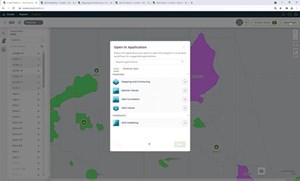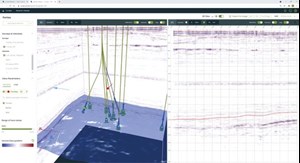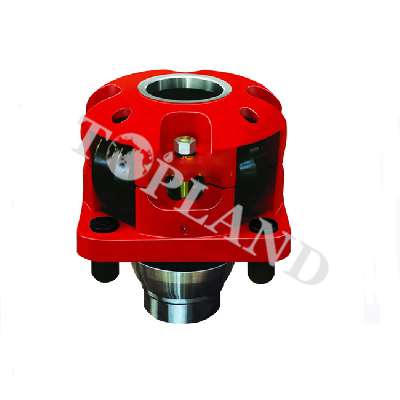IN A TIME OF CHANGE, UNDERSTANDING THE SUBSURFACE REMAINS CRITICAL TO PROJECT SUCCESS
Oil and gas operators and oilfield drilling companies are no strangers to the importance of subsurface data. Creating a map of the subsurface that compares the depth, thickness and composition of subsurface rock formations in nearby wells enables companies to predict the location and productive potential of oil and gas deposits before drilling a new one. This valuable information also can predict whether the rocks can produce enough oil or natural gas to justify the cost of preparing a well for production.
From seismic to well to core data and more, there’s an incredibly large amount of data that company personnel must manage to inform activity in the field, so that resource utilization—including assets, equipment and crews—can be optimized. The management of these substantial volumes of data can be difficult. Consider that a modern seismic survey produces a few to thousands of terabytes of data. When added to the literally millions of entries of core and well logs, IoT real-time data streaming, and the vast stores of data that companies possess in paper form, the significance of the challenge and required sophistication—and digitalization—of any proposed solution is evident.
With computerization came the adoption of numerous, increasingly specialized software applications tailored for different teams and departments. By the very nature of these software applications, data were largely tied to specific software applications, siloed from others, making the sharing of knowledge derived from the use of these applications extremely inefficient and costly. These silos of information still exist today, but the volumes and variety of data have grown exponentially. Companies now must employ knowledge management solutions that unlock data across the enterprise, so that all of it can be used in new ways that drive opportunities, decisions and advantages. The need to utilize all the data that a company possesses, share knowledge derived from it across the value chain and extract more value from the investments made in that data, is now a primary focus.
MAXIMIZING DATA VALUE

The knowledge management tool, Curate, exemplifies what this approach can achieve, as it enables instant, unfettered access to a variety of data stores and databases through a series of APIs and interconnectors, Fig. 1. By connecting and integrating all data—well log, seismic, lab, IOT, drilling history, pack offs, swab surge, core data and more—into a single workspace, all personnel, including drilling teams, can make more accurate, faster, collaborative, and safer drilling decisions. Over the last 20 years of creating digital solutions for the energy industry, we’ve learned that democratizing data and information reduces the uncertainty and risk surrounding a well, and can potentially save a company a significant amount of capital.
RANGE OF APPLICATION

As the industry focuses on decarbonization and progressively moves toward renewables, it is ever more important to be able to efficiently share data and knowledge across disciplines, as critical decisions are increasingly data-driven. While many different types of data are added continuously to subsurface data in sustainable energy projects, the accurate interpretation of that data remains paramount. Siloed data lead to inconsistent and incomplete interpretation of those data, leading to lost opportunities, cost overruns and sub-optimal decisions. As with hydrocarbon production, knowledge management is the cornerstone that underpins interpretation to ensure accuracy and actionability.
Offshore wind. Consider that one of the most challenging aspects for offshore wind is seabed geology. A generic approach would consist of collecting valuable data from public and client sources, generating a “ground model” and designing specifications for a survey or installation. The types of data typically used may include bathymetry, sonar, profiling, sampling, magnetometer, environmental and geotechnical laboratory analysis.
At each stage of the study, there is some iteration, as the model is updated, based on learnings and as new data become available. The study results aim to identify the wind farm location, a corridor to lay the electric cables to the wind farm, and any surface hazards that are likely to exist on, or in, the proposed infrastructure location. For instance, the wind farm could be on top of a depleted reservoir, many kilometers below. As with traditional oil and gas work for de-risking a prospect for drilling, the value of any pre-installation work done for an offshore wind project is critical, as it is a low-cost activity in the development that can significantly reduce the amount and cost of work required moving forward.
The relevance of a knowledge management approach is it allows the integration of lots of data (borehole, geophysical and geotechnical datasets) and people (consultancies) involved. The sharing of information is critical, as any acquired data and interpretations need to be reviewed to assess validity and apply proper data governance. The ability to see the impact of each type of data in a single workspace enables companies to make sound decisions faster, with less risk.
Geothermal application. If an operator intends to convert some of its wells to geothermal reservoirs, understanding the subsurface data in context with bottomhole temperature and wellbore integrity data is essential to determine viability. A knowledge management solution that enables these types of data to be seamlessly flowed into one workspace, so that a myriad of scenarios can be applied, accelerates project execution while protecting finite capital and human resources. Digital knowledge management tools are crucial to thrive in the energy industry, regardless of the energy mix that companies choose to pursue. From optimizing oil and gas operations to determining green hydrogen viability, seamless access to all data sets enables reliable interpretation for more accurate and faster decision-making.




 Upload RFQ
Upload RFQ





 Twitter
Twitter Linkedin
Linkedin Facebook
Facebook YouTube
YouTube Sales@toplandoil.com
Sales@toplandoil.com +86 21-50890868
+86 21-50890868 Head Office: 8-1011,Lane 5600, Chuansha Road, Pudong, Shanghai, China
Head Office: 8-1011,Lane 5600, Chuansha Road, Pudong, Shanghai, China 